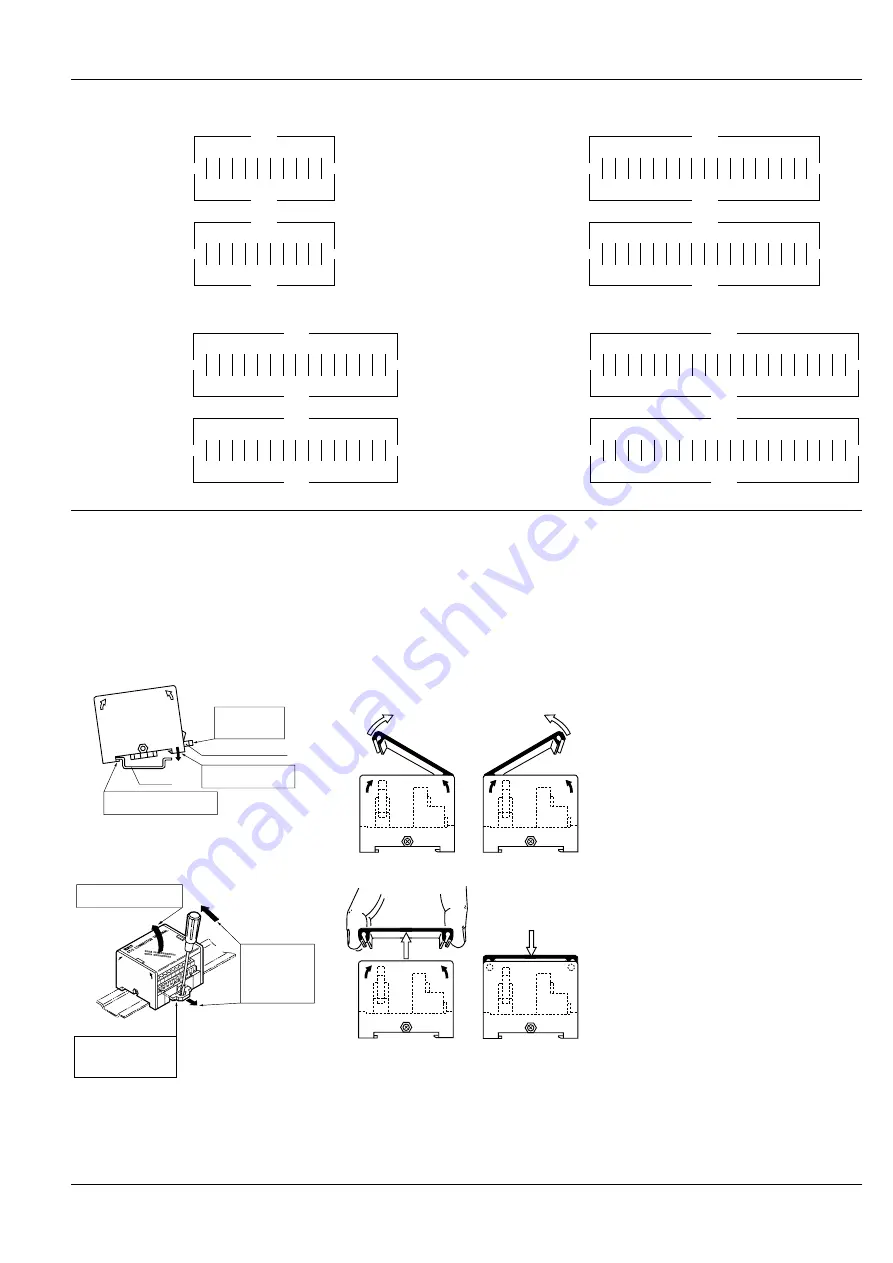
CT-2
SCHEMATIC (Top View)
20 poles
30 poles
34 poles
40 poles
A
A
1
Connector No.
Terminal No.
(from left on the lower stage)
2 3 4 5 6 7 8 9 10
1 2 3 4 5 6 7 8 9 10
B
B
1
Connector No.
Terminal No.
(from left on the upper stage)
2 3 4 5 6 7 8 9 10
1 2 3 4 5 6 7 8 9 10
A
A
1 2 3 4 5 6 7 8 9 10 11 12 13 14 15
1 2 3 4 5 6 7 8 9 10 11 12 13 14 15
B
B
1 2 3 4 5 6 7 8 9 10 11 12 13 14 15
1 2 3 4 5 6 7 8 9 10 11 12 13 14 15
Connector No.
Terminal No.
(from left on the lower stage)
Connector No.
Terminal No.
(from left on the upper stage)
A
A
1 2 3 4 5 6 7 8 9 10 11 12 13 14 15 16 17
1 2 3 4 5 6 7 8 9 10 11 12 13 14 15 16 17
B
B
1 2 3 4 5 6 7 8 9 10 11 12 13 14 15 16 17
1 2 3 4 5 6 7 8 9 10 11 12 13 14 15 16 17
Connector No.
Terminal No.
(from left on the lower stage)
Connector No.
Terminal No.
(from left on the upper stage)
A
A
1 2 3 4 5 6 7 8 9 10 11 12 13 14 15 16 17 18 19 20
1 2 3 4 5 6 7 8 9 10 11 12 13 14 15 16 17 18 19 20
B
B
1 2 3 4 5 6 7 8 9 10 11 12 13 14 15 16 17 18 19 20
1 2 3 4 5 6 7 8 9 10 11 12 13 14 15 16 17 18 19 20
Connector No.
Terminal No.
(from left on the lower stage)
Connector No.
Terminal No.
(from left on the upper stage)
CAUTIONS FOR USE
1. Installation
1) Perform mounting hole cutout accord-
ing to the panel cutout drawings.
2) When installing the unit on a DIN rail,
use the DIN rail locking lever on the side
of the unit. Installation is accomplished by
simply fitting the unit onto the rail and
pressing gently.
3) To remove the unit from the DIN rail,
use a flat head screwdriver to pull out the
DIN rail locking lever.
4) Be careful not to drop or shock the unit.
Excessive shock such as dropping may
cause damage or malfunction.
2. Removal of cover
1) Insertions and withdraws of connector
can be done by lifting the cover like
1
.
2) Wiring to the terminal can be done by
lifting the cover like
2
.
3) Removal of the cover can be done by
lifting it like
3
.
4) In case of resetting the cover, please
push the cover like
4
.
3. Wiring and circuit configuration
1) Make all connections according to the
schematic.
2) When wiring power lines or power ca-
bles, twisted pair treatment (standed wire
treatment) should be done in order to im-
prove noise resistance.
3) In order to improve noise resistance,
class 3 grounding of the control panel is
recommended.
4) Turn off the power before connecting/
disconnecting connector cables.
4. Operating environment
1) Use the product at ambient operating
temperature between 0
°
C and 55
°
C
32
°
F
and 131
°
F
.
2) The main unit is made of resin; there-
fore, do not use it in areas where it may
come in contact with (or be exposed to)
organic solvents such as benzine, thinner,
and alcohol or strong alkaline substances
such as ammonia and caustic soda.
3) Do not use the product in areas where
it may be exposed to flammable gases,
corrosive gases, excessive dust, or mois-
ture, or areas where it may be subjected
to strong vibration or shock.
5. Transporting and storage
1) If the product is subjected to extreme
vibration while being transported, the re-
lays may become detached, the lead may
become bent, and the unit may become
damaged. Handle the inner and outer
boxes with care.
2) If the product is stored in an extremely
adverse environment, visible defects and
deterioration of performance characteris-
tics may result. We recommend the fol-
lowing storage conditions.
• Temperature: 5 to 30
°
C
41 to 86
°
F
• Humidity: Max. 60% R.H.
• Environment: No hazardous sub-
stances such as sulfurous acid gases
and little dust.
DIN rail locking lever
DIN rail
1
2
3
First push in
the DIN rail
locking lever.
Hook the holders on the
unit over the DIN rail.
Press the unit onto
the DIN rail.
1
2
3
Insert the tip of the
flat head screwdriver
into the slot in the
DIN rail locking lever.
Move the
screwdriver in
the direction
of the arrows,
and pull out
the lever.
Remove the unit from
the DIN rail.
1
2
3
4
All Rights Reserved © C
OPYRIGHT
Matsushita Electric Works, Ltd.






















